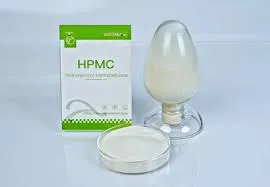
11-р сар . 25, 2024 13:45 Back to list
Comparing HEC and HPMC in Various Applications and Their Unique Properties
Comparing HEc and HPMC A Comprehensive Overview
In the realm of pharmaceutical excipients, hydroxyethyl cellulose (HEC) and hydroxypropyl methylcellulose (HPMC) are two prominent substances that are widely used. Both are cellulose derivatives and serve vital functions in various formulations, particularly in drug delivery systems. Understanding their properties, applications, and differences is essential for formulators to choose the right excipient for their specific needs.
Chemical Structure and Properties
HEC is a non-ionic, water-soluble ether derived from cellulose. It is characterized by the introduction of hydroxyethyl groups into the cellulose polymer chain. This modification increases the solubility of cellulose in water, allowing HEC to dissolve effectively at ambient temperatures. The molecular weight of HEC can vary significantly, influencing its viscosity and gelling properties. Generally, as the molecular weight increases, so does the viscosity, which is a critical factor in its application as a thickener and stabilizer.
On the other hand, HPMC is produced by the methylation and hydroxypropylation of cellulose. The combination of these groups not only enhances its water solubility but also improves its thermal stability and gel-forming capability. HPMC exhibits a unique ability to form gels upon heating, leading to its widespread use in controlled-release formulations. Like HEC, HPMC is also available in various grades, determined by the molecular weight and the degree of substitution of the hydrophilic groups, which in turn dictate its viscosity and other rheological properties.
Applications in Pharmaceuticals
HEC and HPMC find diverse applications in the pharmaceutical industry. HEC is predominantly utilized as a thickening agent, film-forming agent, and stabilizer in emulsions and suspensions. Its ability to improve the viscosity of solutions allows for better suspension of active pharmaceutical ingredients (APIs), leading to more consistent dosing in liquid formulations.
hec vs hpmc

HPMC, conversely, is widely used in the formulation of extended-release and controlled-release dosage forms. Its gel-forming capabilities allow it to regulate the release of drugs into the body gradually. This property is particularly advantageous for drugs that require a prolonged therapeutic effect. Additionally, HPMC is often employed in tablet formulations due to its binder properties, which enhance tablet hardness and improve disintegration times.
Differences in Performance
While both HEC and HPMC are effective in their roles, their performance characteristics can vary significantly based on the intended application. HPMC generally offers a better thickening capability and gel formation under heating, making it suitable for applications requiring strong gel-like properties. This characteristic is particularly useful in creating sustained-release formulations. Moreover, HPMC is known for its reduced tendency to form films, which can be beneficial in controlled-release formulations that require specific release profiles.
In contrast, HEC's thickening capabilities are effective in producing stable dispersions and emulsions rather than gels. Its performance in stabilizing emulsions is often superior due to its molecular weight variations, which can be tailored to achieve desired viscosity levels without excessively impacting the flow properties of the formulation.
Conclusion
In summary, both hydroxyethyl cellulose (HEC) and hydroxypropyl methylcellulose (HPMC) are invaluable excipients in the pharmaceutical industry, each offering unique benefits and applications. The choice between HEC and HPMC ultimately depends on the specific requirements of the formulation, such as viscosity, gel properties, and release characteristics. By understanding the chemical properties and functions of these cellulose derivatives, formulators can make informed decisions to optimize their drug delivery systems, ensuring efficacy and patient compliance. As the pharmaceutical landscape continues to evolve, the role of HEC and HPMC will likely become even more significant in creating innovative drug formulations.
-
Versatile Hpmc Uses in Different Industries
NewsJun.19,2025
-
Redispersible Powder's Role in Enhancing Durability of Construction Products
NewsJun.19,2025
-
Hydroxyethyl Cellulose Applications Driving Green Industrial Processes
NewsJun.19,2025
-
Exploring Different Redispersible Polymer Powder
NewsJun.19,2025
-
Choosing the Right Mortar Bonding Agent
NewsJun.19,2025
-
Applications and Significance of China Hpmc in Modern Industries
NewsJun.19,2025







